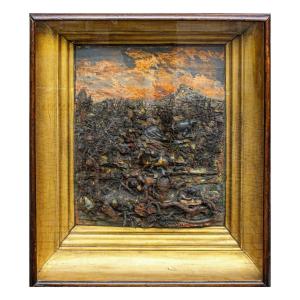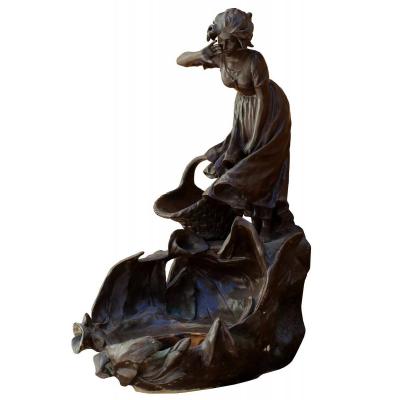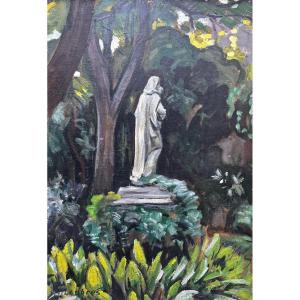Christ laughed
Oil on panel, cm 63 x 50
With frame, cm 80 x 100
The artist responsible for the execution of this painting is certainly inspired by the paintings of the great Flemish masters of the seventeenth century, with particular reference to Maarten de Voss. The painter from Antwerp, trained first in his father’s workshop and later under the guidance of the famous Frans Hals and Frans Floris, around the middle of the sixteenth century he stayed in Italy, making a stop in Florence, in Rome and Venice and even frequenting the workshop of Tintoretto. The visual imagery and the intense and vibrant colors of Venetian painting strongly affect him and clearly condition his subsequent pictorial production: the works of the first maturity are distinguished by the warm and intense tones and by the monumentality of the figures. Following the fruitful stay in Italy, de Vos returns to Antwerp and opens a workshop attended by numerous students: after the "Italian" period, the following production became more and more academic and mannerist, as is evident in various historical-religious, including The Wedding at Cana, The Triumph of Christ, The Final Judgment, Ecce Homo and Stories of Rebecca.
The artist who performs this painting inherits from de Vos the iconography of the derision Christ: the master originally from Antwerp elaborates this particular iconographic model probably inspired by a Durerian engraving of 1509-1510, currently at the Department of Prints and Drawings of the British Museum in London. The invention of de Vos will have an extraordinary visual fortune in seventeenth-century Flanders, as evidenced by various prints and engravings, including those of Hieronymus Wierix and Jan Collaert currently at the Rijksmuseum in Amsterdam.
On a technical level, the painter who executed this painting seems to look not only at de Vos but also at the other famous artist from Flanders of the seventeenth century, Frans Fran Francken II (Antwerp, 1581 - 1642): from his works seem in fact taken the clear light of the faces of the characters and the armor, canonical in his paintings; another data recovered from Francken’s works is the presence of the little dog at the center of the scene, which is also found in two of the master’s most famous masterpieces, The Seven Works of Mercy at the Deutsches Historisches Museum in Berlin and Jesus as a prisoner at the Prado Museum.
















































 Le Magazine de PROANTIC
Le Magazine de PROANTIC TRÉSORS Magazine
TRÉSORS Magazine Rivista Artiquariato
Rivista Artiquariato